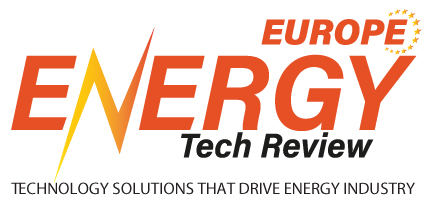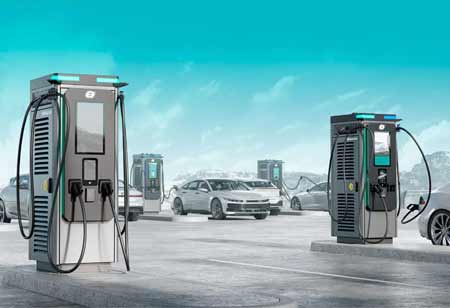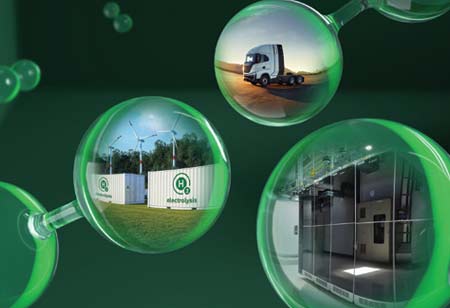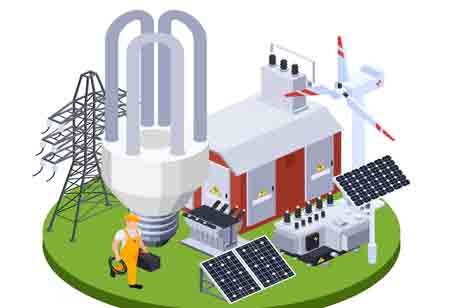CLOSE
Specials
I agree We use cookies on this website to enhance your user experience. By clicking any link on this page you are giving your consent for us to set cookies. More info
Be first to read the latest tech news, Industry Leader's Insights, and CIO interviews of medium and large enterprises exclusively from Energy Tech Review
Thank you for Subscribing
EV Charging as a Catalyst for Renewable Grid Integration
The rise of electric vehicles (EVs) is transforming transportation, enhancing the electric grid's resilience through smart charging and the integration of renewable energy by innovative charging providers.
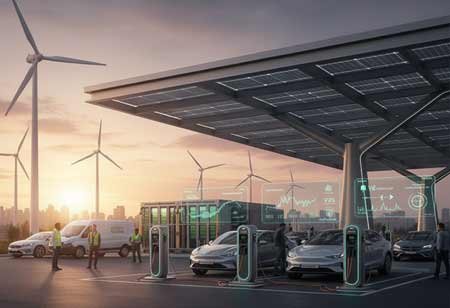
By
Energy Tech Review | Friday, December 05, 2025
Stay ahead of the industry with exclusive feature stories on the top companies, expert insights and the latest news delivered straight to your inbox. Subscribe today.
Fremont, CA: The global shift toward electric vehicles (EVs) is fundamentally transforming the transportation sector. Still, its full potential lies not just in reducing tailpipe emissions, but in becoming a powerful engine for a cleaner, more resilient electric grid. EV charging providers are at the forefront of this revolution, evolving from simple energy dispensers to sophisticated grid partners that actively drive the integration of intermittent renewable energy sources, such as solar and wind power.
Smart Charging: Matching Demand with Green Supply
The most widely adopted strategy for optimizing EV charging is Smart Charging, also known as V1G (Unidirectional Managed Charging), whereby providers utilize advanced software and communication protocols to control both the timing and rate of charging. Complementing this approach, Time-of-Use (TOU) pricing and load-shifting mechanisms incentivize EV owners to charge during off-peak hours—typically late at night—when electricity costs are lower and grid demand is reduced. These periods often align with times when wind farms generate surplus power that might otherwise be curtailed, maximizing the use of renewable energy. Building on this, renewable matching algorithms utilize real-time data and artificial intelligence to synchronize charging sessions with periods of peak solar or wind generation. By prioritizing energy consumption when clean electricity is most abundant, these systems reduce reliance on fossil-fuel “peaker” plants, ensuring that EV charging contributes to a lower-carbon energy profile.
Infrastructure and Policy as Enablers
EV charging providers are evolving beyond software development to create the comprehensive physical and digital infrastructure necessary for seamless integration with the energy ecosystem. They deploy distributed charging networks equipped with battery storage, forming localized microgrids that can operate independently or in conjunction with the primary grid, thereby enhancing energy resilience and optimizing on-site renewable energy utilization, such as solar canopies paired with battery systems. At the same time, providers collaborate with automakers and utilities to standardize communication protocols, including OpenADR, enabling real-time, intelligent interaction between chargers, EVs, and grid operators. They also implement advanced utility programs that incentivize driver participation in smart charging and vehicle-to-grid (V2G) initiatives, aligning consumer behavior with grid efficiency and renewable energy optimization.
EV charging providers are now much more than just the gas stations of the electric age. By pioneering smart charging, deploying V2G technology, and establishing a flexible, intelligent charging network, they are actively helping to green the grid. Their innovation is helping to solve the critical storage challenge of renewable energy, paving the way for a transportation and energy ecosystem that is both electric and genuinely sustainable. Renewables do not just power the future grid; they power the vehicles themselves.

Copyright © 2025 Energy Tech Review. All rights reserved
